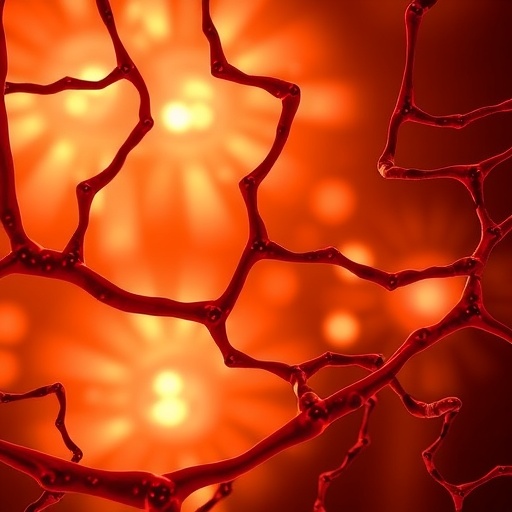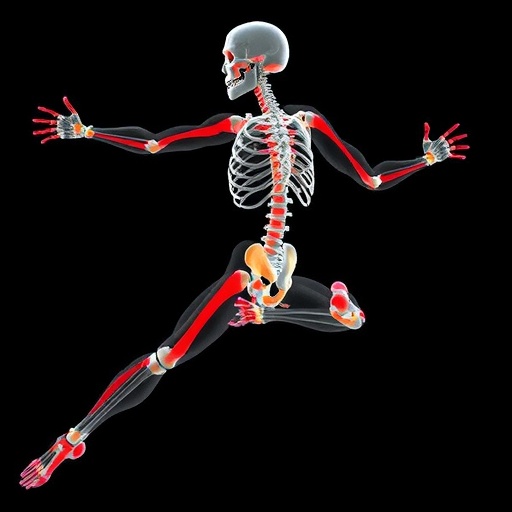PROTECT YOUR DNA WITH QUANTUM TECHNOLOGY
Orgo-Life the new way to the future Advertising by Adpathway
In recent years, the application of technology in sports has transformed the way games are played, officiated, and analyzed. At the forefront of this technological revolution is a fascinating development concerning the detection of last touches in football, a pivotal aspect when making out-of-bounds possession decisions. A groundbreaking study led by Wang, H., Mills, K., and Billingham, J., published in the journal Sports Engineering, delves into semi-automated methods that promise to reshape football officiating. This innovative approach could enhance accuracy and efficiency, thus ensuring that the integrity of the sport is maintained while minimizing human errors.
Football, often referred to as the beautiful game, boasts a rich history and a vast following worldwide. However, one of the enduring challenges for referees has always been making split-second decisions regarding possession after the ball has gone out of bounds. Traditionally, the process is reliant on the subjective judgment of officials, which can lead to controversies and debates. The study by Wang et al. introduces a semi-automated system designed to support referees in these often contentious situations, potentially leading to more accurate decisions that align with the true dynamics of the game.
The researchers employed advanced computer vision techniques to analyze game footage and determine which player last touched the ball before it went out of bounds. The semi-automated system takes into consideration numerous factors, including player movements, ball trajectory, and field positioning. This multi-faceted approach allows for a much more detailed understanding of play, significantly reducing the ambiguity that often clouds such decisions. The emphasis on real-time analysis underscores the need for speed and precision, critical in a sport as fast-paced as football.
One of the principal challenges faced by football referees is the sheer intensity and speed of the game. Players move swiftly, often in tightly contested situations, making it exceptionally difficult to ascertain who last had possession of the ball. The semi-automated detection system leverages machine learning algorithms to process video feed in real time, recognizing patterns and making determinations based on historical data. This technology allows for an unprecedented level of scrutiny over each play, equipping referees with the insights needed to make informed decisions with confidence.
The implications of this research extend well beyond the drawing board of technology pioneers. For players, coaches, and fans alike, the ability for referees to utilize such a system could fundamentally alter the experience of the game. Players may feel more confident in contesting plays, knowing that a fair, objective analysis is taking place. Similarly, coaches may utilize the data to refine strategies and training methods, understanding player engagement with the ball in greater depth. For fans, the transparency introduced by accurate autonomous tools could enhance their viewing experience, leading to a more engaged and informed audience.
Moreover, the integration of semi-automated decision-making systems directly addresses the growing scrutiny over refereeing decisions. With the rise of social media and instant replays, scrutinized moments during games can take on a life of their own. The controversy surrounding decisions can affect the game’s image, as supporters and analysts debate every call. By implementing technology that objectively evaluates last touches, the focus shifts from subjective human error to evidence-based analysis, potentially calming tempestuous debates following crucial moments in matches.
The study’s design also considers the balance of technology in sports. While automation in officiating might raise concerns over reducing the human element of the game, the researchers emphasize that their system is intended to serve as an aid rather than a replacement for referees. Decisions still ultimately reside with officials, which respects the traditional aspects of the sport while enhancing decision-making capabilities. This principle of maintaining a human element ensures that the game retains its essence, with technology functioning to support, rather than dictate, gameplay.
It is important to highlight the anticipated challenges and limitations of deploying semi-automated systems in professional football. Ensuring widespread acceptance amongst referees, players, and institutions requires a robust framework for implementation and consistent reliability in detection systems. Training officials to effectively use the new technology will be crucial in achieving a seamless integration. Furthermore, the initial costs associated with developing this technology and the required hardware may pose hurdles before its widespread adoption.
However, the potential benefits could justify these initial challenges. As demonstrated in trials, the accuracy of possession decisions can expect a notable improvement, potentially reducing disputes and protests from teams. The data generated by these technologies could also facilitate post-match analysis, offering insights for future training and tactics—making this a transformative development for various facets of football beyond just officiating.
Looking ahead, the conclusions drawn from the study by Wang and colleagues inspire optimism for further innovation in sports technology, as the trend is likely to extend into other competitive arenas. As semi-automated detection systems evolve, other sports may adopt similar methodologies, each tailored to the unique characteristics of their respective games. An array of promising applications lies in wait, making the possibilities for enhanced officiating and player engagement virtually endless.
In conclusion, Wang et al.’s exploration of semi-automated last touch detection in football represents a significant leap forward in sports technology. By bridging the gap between human officiating and automated precision, this research not only promises to refine decision-making in football but could also set a new standard across various sports disciplines. Striking a harmony between tradition and innovation may well be the future of relationship-building among players, referees, and the ever-enthusiastic fanbase that accompanies them—a reality where every touch is accurately recognized and every decision confidently upheld.
As the world of sports continues to embrace technological advancements, the implementation of such systems may very well be the cornerstone for future developments. Stakeholders across the sport are encouraged to embrace these innovations proactively, paving the way for an era of intelligent officiating that champions fairness, integrity, and a better understanding of the game.
Subject of Research: Detection of last touches for out-of-bounds possession decisions in football using semi-automated technology.
Article Title: Semi-automated last touch detection for out-of-bounds possession decisions in football.
Article References:
Wang, H., Mills, K., Billingham, J. et al. Semi-automated last touch detection for out-of-bounds possession decisions in football.
Sports Eng 28, 36 (2025). https://doi.org/10.1007/s12283-025-00518-3
Image Credits: AI Generated
DOI: https://doi.org/10.1007/s12283-025-00518-3
Keywords: football, semi-automated detection, officiating, technology, sports engineering, machine learning, player analysis.
Tags: accuracy in sports officiatingadvancements in sports engineeringcomputer vision in footballenhancing game integrity in footballfootball last touch detectioninnovative sports technologyminimizing human errors in refereeingout-of-bounds call technologyreferee decision-making in footballsemi-automated football officiatingtechnological impact on sportstransforming football officiating


 16 hours ago
13
16 hours ago
13





















 English (US) ·
English (US) ·  French (CA) ·
French (CA) ·